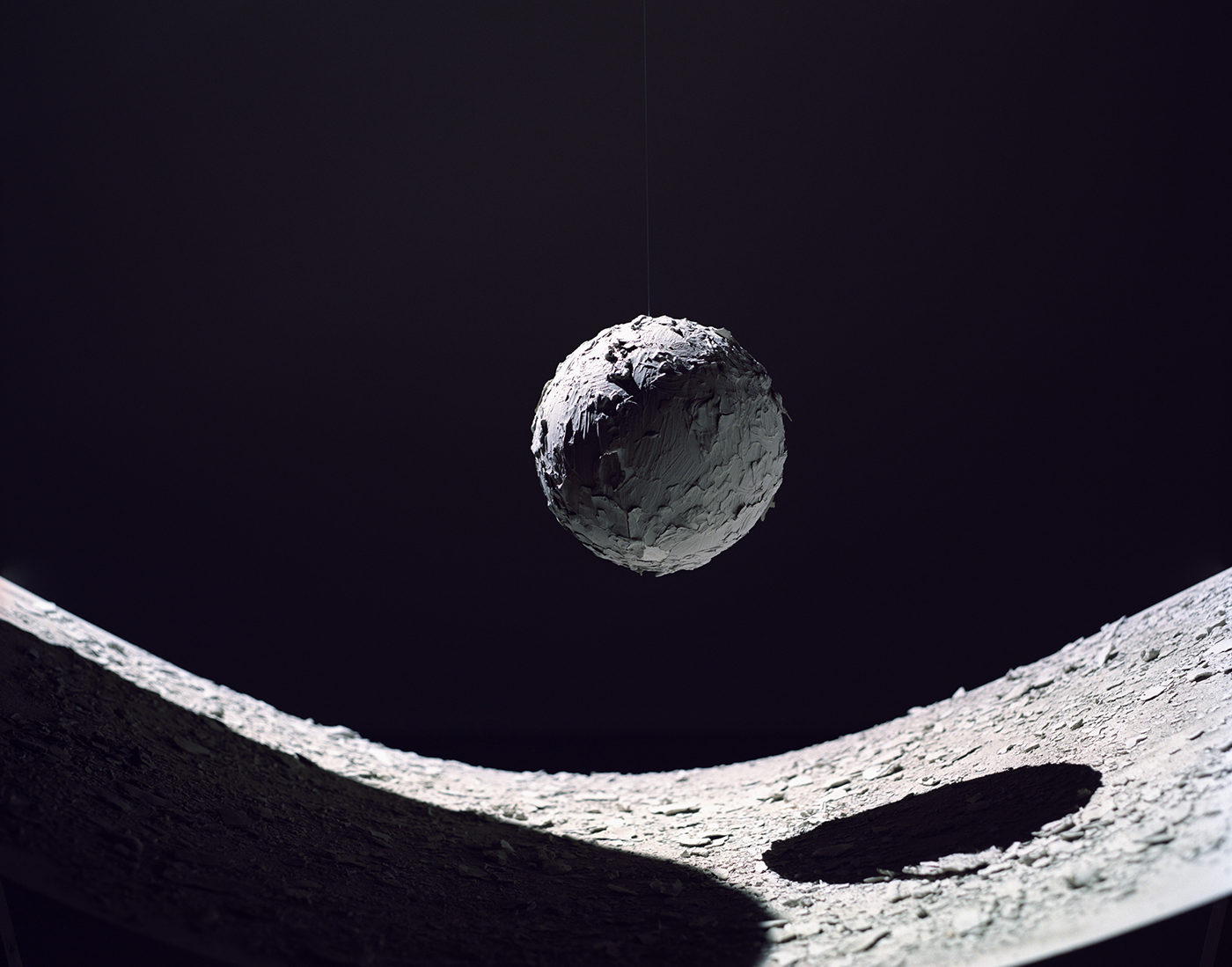P.L.A.N.È.T.E.S

P.L.A.N.È.T.E.S
The "conquest of space" that the rivalry of the Russians and the Americans considerably publicized would have greatly marked the artists of the 1960s whom Patrick Tosani attentively studied when he was a student. The images of the moon were moreover used on the covers of the activist ecological magazine Whole Earth Catalog of the fall 1968, the spring 1969 and once again the fall 1970 issues, while at the same time, Stanley Kubrick's film, 2001: A Space Odyssey was released, synthesizing in a certain way the minimalism and the conquering intentions of the two great world powers of the period, the whole on a cosmic ballet in which the planets rotated on a melody from Johann Strauss? Blue Danube.
This light from interstellar space to which I alluded is found in the most recent series by Patrick Tosani, who discovered, in that famous month of July 1969, those celebrated images of the moon. But it is in no way the artist?s intention to replay, based on an enactment, the fascination that an entire generation felt at the time. His starting point is moreover not the stars but earth itself. Speaking about his most recent works, he writes: "These images spoke of a "photographic" memory of the city, of nature, events, facts" in a distant environment, one that perhaps was destroyed, perhaps was recreated, certainly in another temporality." He then evokes the [moon's] surface whose presence drew his attention and that became, for him, "the vector of a timeless representation and an infinite horizon" exploring the limits of photography."
Through these images then, which he captures, today, it is the appearance of what he calls "generic land", based on which we imagine any kind of surface and any kind of space. It is what permits us to see the images brought back by NASA and also to imagine the world in which we live. Consequently, photographing plaster planets under stellar lights is not more artificial than restoring an image for us using a camera, no matter how precise it is.
Seen from a distance, we have the impression of being in the presence of a collection of astronomical images but as soon as we draw nearer we understand that this cannot be the case. What we thought was the uneven surface of the moon, or a comparable star, is only a simulation that does not try to pass for something else : plaster, clay, crumbly fragments and cracked paint. The procession of spheres that advance toward the corner of the room where they were photographed immediately shows its colors : "an ironic and illusory exploration of a false stellar space that multiplies the ambiguities of interpretation", as Tosani so aptly says.
Nonetheless, the trick works, a little like at the theater where the protocol states : everything here is artificial but you are going to believe it, you are going to feel things that seem to you to have come from your direct experience but all the while knowing that this is false. Yet the beauty of this work it that we dream in a papier-mâché or rather in a photographic concentrate world in which it is nothing but the light of volumes and expanse.
What is this planet hung above a concave surface on which it casts its shadow ? And this other one that could be the photograph of an eclipse but that we quickly realize is nothing other than a shadow on a flat surface in a halo of light that is slightly larger than the supposed planet that produced it. These bodies floating in space evoke stars but aren't and they tell us, inversely, how much of what we believe real when we give credit to scientific images is only a group of photographic images. Which doesn't prevent us from pondering the nature of this strange aircraft topped with a sparkling luminous specter like an aurora borealis and that, perhaps even more than the others, accentuates the ambiguity of what we see : folded rubber, a jellyfish or a flying saucer, a creature from the cosmos or from the nethermost regions, or the metamorphoses of the visible that art makes us aware of."
Extract of «Spationaute», 2017, Gilles A. Tiberghien